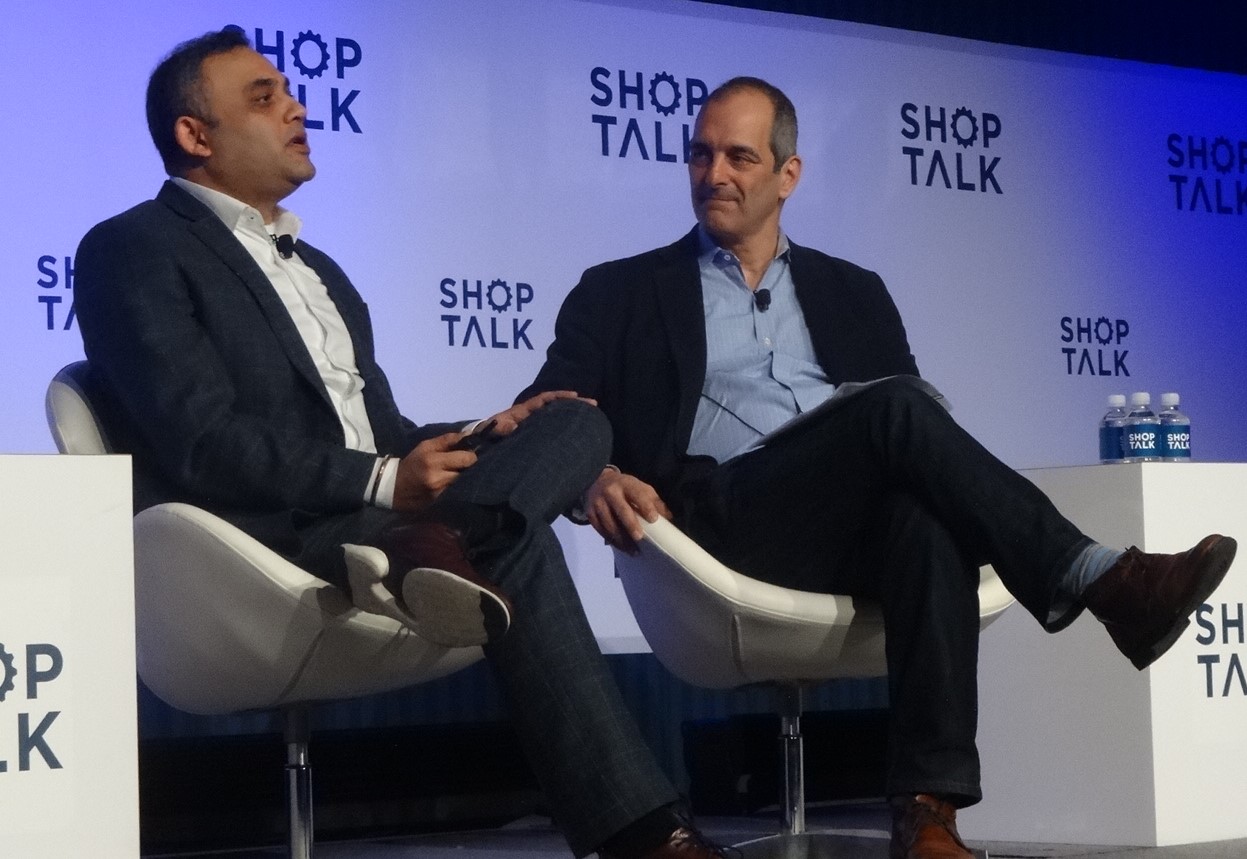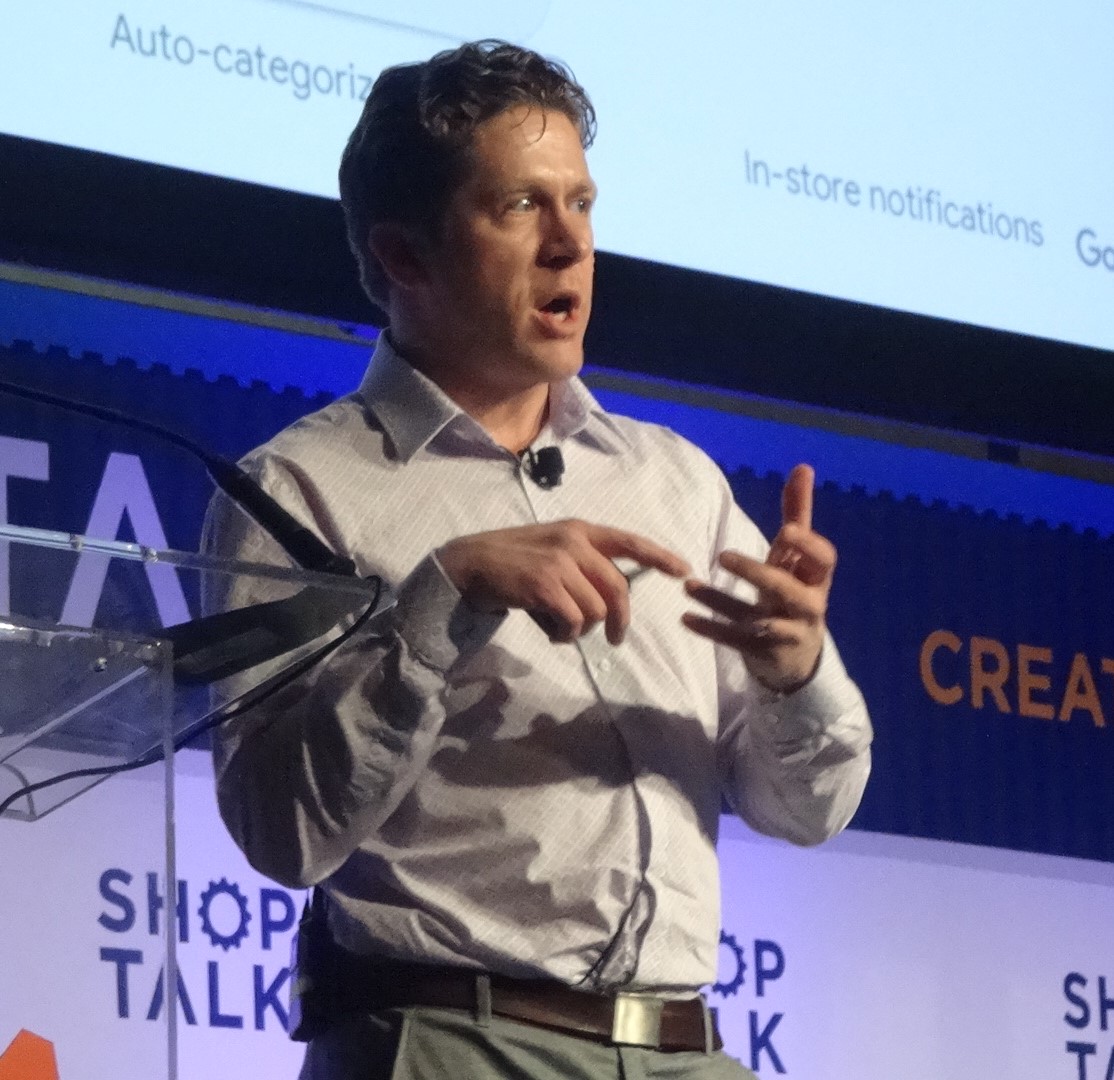Article
Sam's Club, 7-Eleven push forward with cashierless stores
Executives from Sam's Club and 7-Eleven offer insight on their progress with self-checkout initiatives and how the innovative technologies are a boon for both retailers and customers.

March 12, 2019 by Elliot Maras — Editor, Kiosk Marketplace & Vending Times
Amazon grabbed the spotlight with its cashierless stores when it introduced Amazon Go in late 2016. But existing brick and mortar retailers have not been silent. 7-Eleven and Sam's Club have been testing "scan and pay" technology. Executives from both companies gave an update on their progress at the Shoptalk Show in Las Vegas during a session on emerging shopping experiences.
 |
Tarang Sethia of 7-Eleven tells moderator Pano Anthos the company is monitoring possible customer theft with Scan & Pay. |
Both retailers are testing their scan and pay technologies in Dallas. Both are also using artificial intelligence and computer vision scanning.
"All you do is start scanning," said panelist Tarang Sethia, vice president of product management and digital customer and store experience at 7-Eleven. He said Americans spend 37 billion hours a year waiting in line, while three quarters of Gen Xers and millennials are interested in using scan and pay technology.
7-Eleven's Scan & Pay lets customers skip the checkout line and pay for their purchases using the 7 Eleven app, which also houses the 7Rewards loyalty program.
In November, the company announced it was launching Scan & Pay in 14 stores in the Dallas area, allowing customers to use it to pay for all merchandise except for items that require cashier assistance, such as hot foods, financial services and age-verified products like alcohol, tobacco and lottery tickets.
7-Eleven plans to expand the service to more cities in 2019. The company first tested its mobile self-checkout at its store support center store, where employees used it prior to this multi-store launch.
Scan & Pay makes store associates more comfortable since they can focus on assisting customers, Sethia said. He said artificial intelligence will help retailers serve customers the way they want to be served, while computer vision scanning will help the company better understand what customers want.
What about customer theft?
Session moderator Pano Anthos, founder and managing director of XRC Labs, an innovation center for retail and consumer products, asked how 7-Eleven is addressing the possibility of theft. Sethia said artificial intelligence is able to alert store personnel which customers to check. "We are monitoring it," he said.
Sam's Club introduced its Scan & Go app two years ago. "Our members love it," said panelist Eddie Garcia, vice president of end-to-end experience at the company. He said Scan & Go is live in 600 stores and 90 percent of shoppers who use it become repeat users.
In November, the company introduced a new store concept called Club Now where members will use the Scan & Go app. The store also has real-time wayfinding powered by beacons. The store will also use augmented reality to help members find what they are looking for.
The company will use Club Now as a laboratory to test other technologies, Garcia said.
The company is testing computer vision instead of barcode scanning to identify items as the customer adds them to their shopping cart, he said. The technology will create "smart" shopping lists for customers and will recommend products to shoppers based on past purchases. The technology will also guide associates what to look for when they check customers shopping carts as they exit.
In a letter describing the new store in October, Jamie Iannone, CEO of Samsclub.com and executive vice president of membership and technology, said the company has developed technology that combines machine learning and purchase data to automatically update the customer's shopping list as items are scanned and removed from the basket.
In addition, the company will use voice and search capabilities to guide members where to find items in the 32,000-squaree-foot store, Iannone said, and will also test electronic shelf labels to automatically update prices, removing the need for price signs.
Google Assistant enters the fray
Panelist Larry Adams, voice shopping product lead at Google, said his company's Google Assist can help consumers find products in stores. "With the assistant the user is very much in control," he said.
 |
| Larry Adams of Google encourages retailers to use Google Assistant. |
He said Nike recently ran an ad on Google Assistant to promote a new sneaker and gave them an opportunity to see a video about the shoe.
Adams acknowledged that consumer adoption of voice technology is slower than other technologies such as mobile technology since the difference is greater compared to what the consumer is used to. However, he said, voice will allow interactions that were not previously possible.
Machine recognition of speech will be better than human recognition, Adams said.
Adams suggested retailers can engage customers through Google Assistant in the following ways:
- Help customers find the right content about the store.
- Help customers shop products and run voice promotions.
- Assist customers to find a store and brand that is near where they live.
- Build a unique voice experience.
About Elliot Maras
Elliot Maras is the editor of Kiosk Marketplace and Vending Times. He brings three decades covering unattended retail and commercial foodservice.
